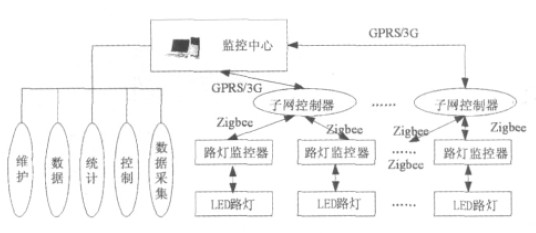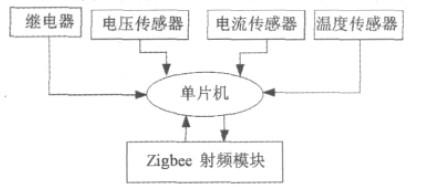
Privacy statement: Your privacy is very important to Us. Our company promises not to disclose your personal information to any external company with out your explicit permission.

0 Preface
China's urban lighting has been rapidly developed along with the acceleration of China's urbanization process. However, the energy demand and consumption in the development of urban lighting is also increasing. In general, green lighting work still has problems such as high energy consumption, high pollution, and low efficiency.
According to the survey, China's current street lamps are mainly low-efficiency lighting, and the energy utilization rate is low.
In view of the serious pollution, power waste, high energy density and low lighting efficiency in the lighting, researching the street lamp energy-saving control system and promoting street lighting energy-saving and energy-saving will play an active role in promoting the overall development of green lighting.
1 The current shortage of street lighting systems
In modern society, the street lighting of urban charm business cards and windows has created a splendid urban civilization and brought some problems. Energy consumption has become the key to restricting the development of current street lighting systems.
1.1 Large voltage fluctuations - waste of operation
Since the change in the grid load varies with the time period, the corresponding voltage fluctuation is also large. In the middle of the night when there are more pedestrians and vehicles, the voltage is lower and the brightness is darker; in the middle of the night, it is extremely bright, which is caused by the voltage rise due to the change of the grid load. Large voltage fluctuations increase the ratio of electricity to heat conversion, reducing the efficiency of the luminaire and causing waste of electrical energy.
1.2 Line loss is large --- line waste
The street lamp has a long power supply line and low power, so the line loss is large. At the same time, the general 220 V single-phase voltage-powered street lamp has a serious three-phase unbalance, which will cause excessive zero-sequence current and zero displacement. Increased circuit losses.
1.3 extensive management methods - indirect waste
At present, the line control of street lighting is relatively simple, and it is impossible to monitor, record and count the operation results. The discovery of abnormal equipment depends on manual inspection. It is found that the fault is not timely, and the efficiency of handling the fault is not high, which ultimately leads to waste of manpower and material resources.
In order to solve the problems existing in the street lamp system, LED street lamps with the advantages of energy saving, environmental protection and longevity have been highly valued by the low carbon society. Research and development of LED street lamp energy-saving control system, improve resource utilization and save energy, has become the top priority of street lamp energy saving.
2 LED street light energy saving control system based on wireless sensing technology
The LED street lamp energy-saving control system based on the wireless sensor technology can monitor the switch state of the LED street lamp in real time, and simultaneously detect and collect various parameter information of the LED street lamp. All kinds of parameter information (switch status, current, voltage, brightness, temperature, etc.) of the LED street lamp are transmitted to the monitoring center in real time via the wireless sensor node around the LED street lamp. Based on this, the system designs the maintenance plan and issues an alarm to notify the fault handling, saving labor costs, improving the efficiency of fault handling, and realizing the intelligentization of street lamp management.
The LED street lamp energy-saving control system based on wireless sensor technology has the following advantages: 1 wireless mode networking, no wiring, flexible expansion, and no space; 2 easy to adopt, quick and convenient implementation, does not affect the road environment; Convenient, high efficiency of equipment failure processing, reducing the energy consumption of street lamps.
The LED street lamp energy-saving control system based on wireless sensing technology improves energy utilization and saves certain energy costs. Extends the life of the lighting fixture while helping the lighting system save a lot of power.
3 overall system design
The LED street lamp energy-saving control system based on wireless sensing technology is mainly composed of three parts: monitoring center, sub-network controller and LED street lamp monitor. The system structure is shown in Figure 1.

Figure 1 LED street light energy-saving control system based on wireless sensor technology
3.1 LED street light monitor
The heart of the LED street light monitor is the microcontroller, which is responsible for data processing and is the data center of the monitor. The voltage, current, and temperature sensors collect current, voltage, and temperature values, and the relay controls the state of the LED street light, and then sends the information to the single-chip microcomputer, and the single-chip microcomputer communicates with the Zigbee RF module to report various parameters of the LED street light to the sub-network controller. Accept the monitoring commands of the subnet controller.
The LED street light monitor controls the switching status and acquisition, brightness adjustment, current, temperature, voltage acquisition, and the like. LED street light monitors are divided into external and modular, to meet different needs. The LED street light monitor is shown in Figure 2.

Figure 2 LED street light monitor
3.2 Subnet controller design
The subnet controller is located between the monitoring center and the LED street light monitor and communicates with the system center and the street light monitor in different ways. It uses the Zigbee communication protocol to issue commands from the system center and feedback the monitoring of the LED street light monitor. The subnet controller is responsible for processing all transactions within this subnet, including monitoring the LED street light monitor operating status and control signals, and handling alarms.
The single-chip microcomputer, GPRS/3G and Zigbee RF modules form a subnet controller. The microcontroller is the core of the subnet controller. The MCU receives various commands of the monitoring center and reports the parameter values of the LED street lamp monitor. At the same time, it sends monitoring commands through the Zigbee RF module.
3.3 Monitoring Center
The main function of the monitoring center is to monitor and remote data access to the LED street light monitor, including configuration parameters, sending monitoring commands, and collecting LED street lights. The LED street lighting time and switch settings can be changed with the sunshine conditions of the road section and the flow of people and vehicles, which not only meets the needs of lighting, but also saves energy. The function of the monitoring center is implemented by the following modules:
Data management module. The data management module is mainly used for data application management and is the core of the whole system. The data management module manages system operation and configuration data, including management of street lamp monitor data, system operation status data, and management of other configuration data.
Main interface module. The main interface module is mainly composed of monitoring management, data display and control panel. The data is visually displayed in a graphical manner to provide users with real-time monitoring of the entire LED street light. At the same time, users can configure and manage the system according to their own needs.
Database module. The database module is primarily responsible for the data storage and operation of the system. The system can call and play back the historical data stored in the database at any time as needed to provide support for the function execution and analysis of other modules.
User management module. The user management module is mainly responsible for the management of user accounts in the system, including account registration, login and modification, setting and authorization of different user rights, strictly controlling user modifications to the system, and achieving system security and stability.
Communication management module. The communication management module is mainly responsible for the configuration and management of the communication interface to ensure data communication. It is the external interface of the software system, and through the interaction with the data controlled by the underlying center, the user finally controls the underlying hardware.
4 Conclusion
The LED street lamp energy-saving control system based on wireless sensing technology improves the efficiency of street lamp management and fault handling, reduces the energy consumption of street lamps, saves electricity, prolongs the service life of lighting fixtures, and saves energy costs and lighting costs for the city. The lighting has contributed.
Envoyer à ce fournisseur

Privacy statement: Your privacy is very important to Us. Our company promises not to disclose your personal information to any external company with out your explicit permission.

Fill in more information so that we can get in touch with you faster
Privacy statement: Your privacy is very important to Us. Our company promises not to disclose your personal information to any external company with out your explicit permission.